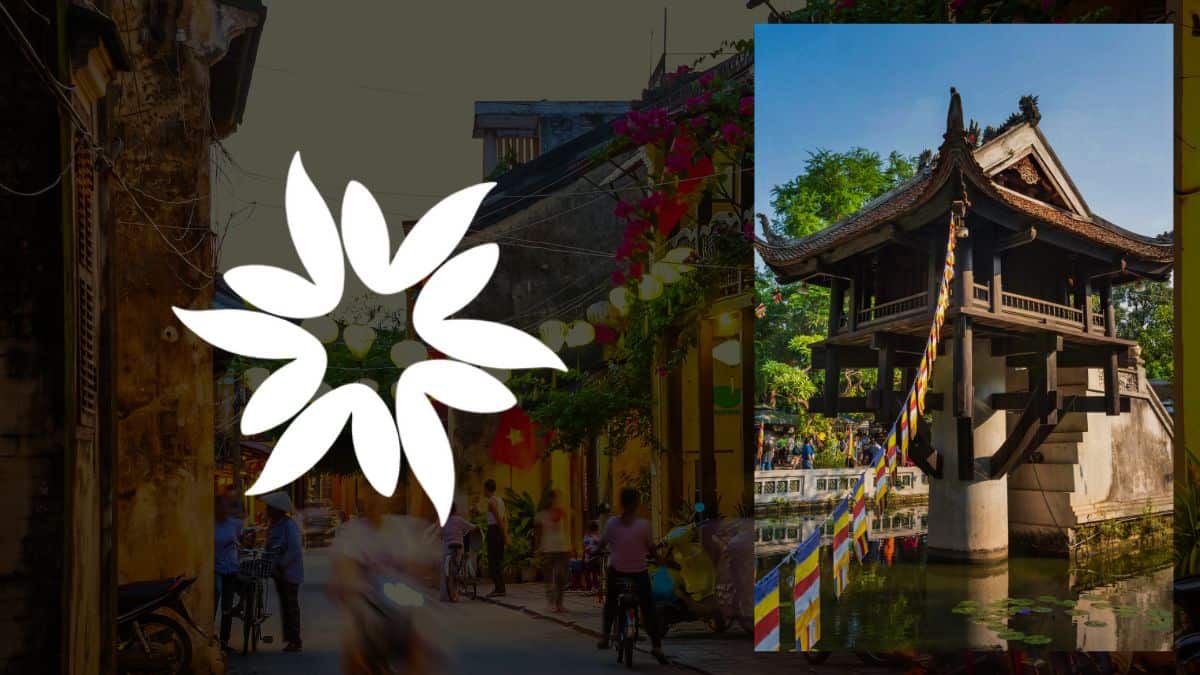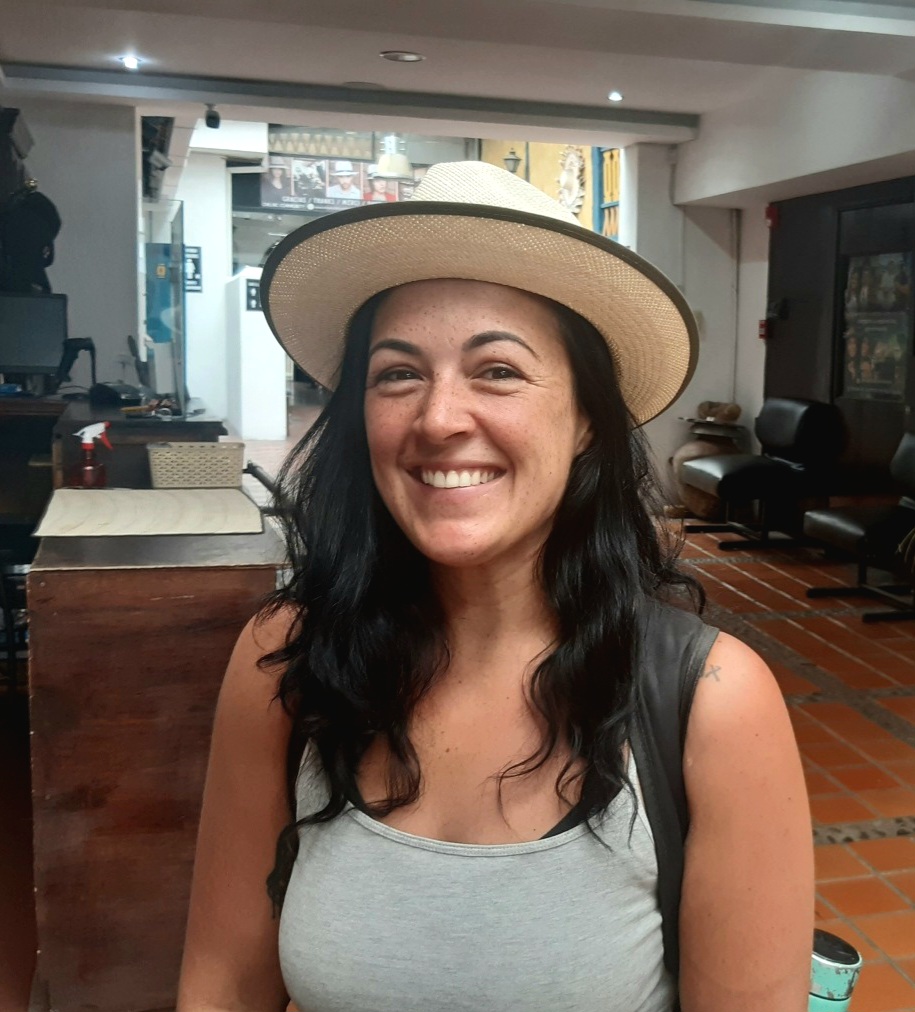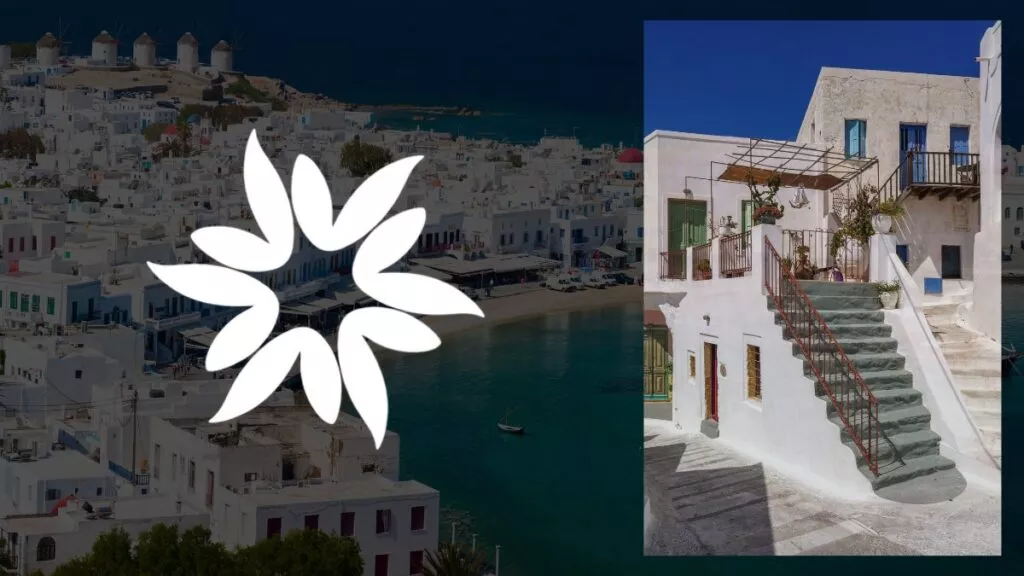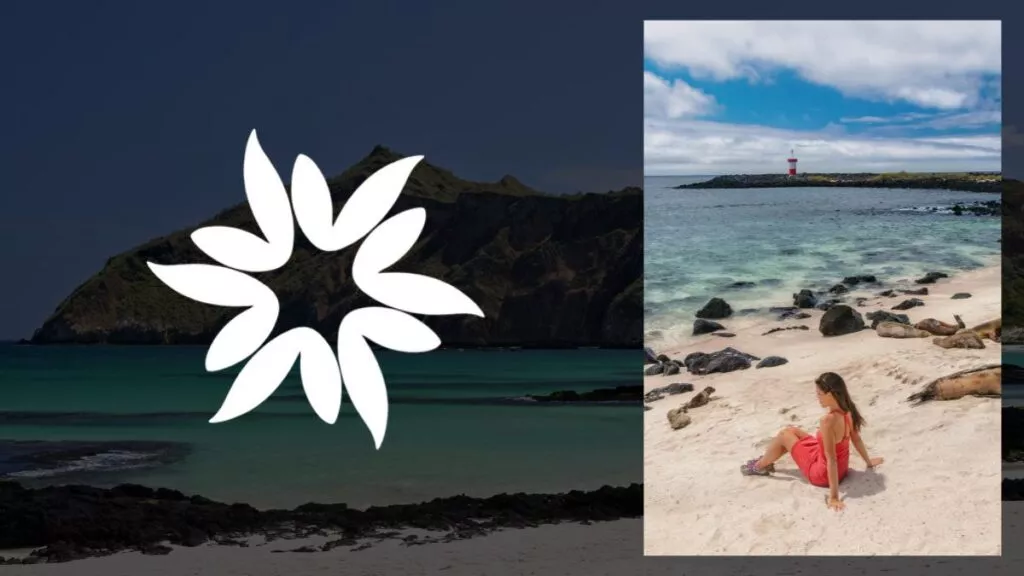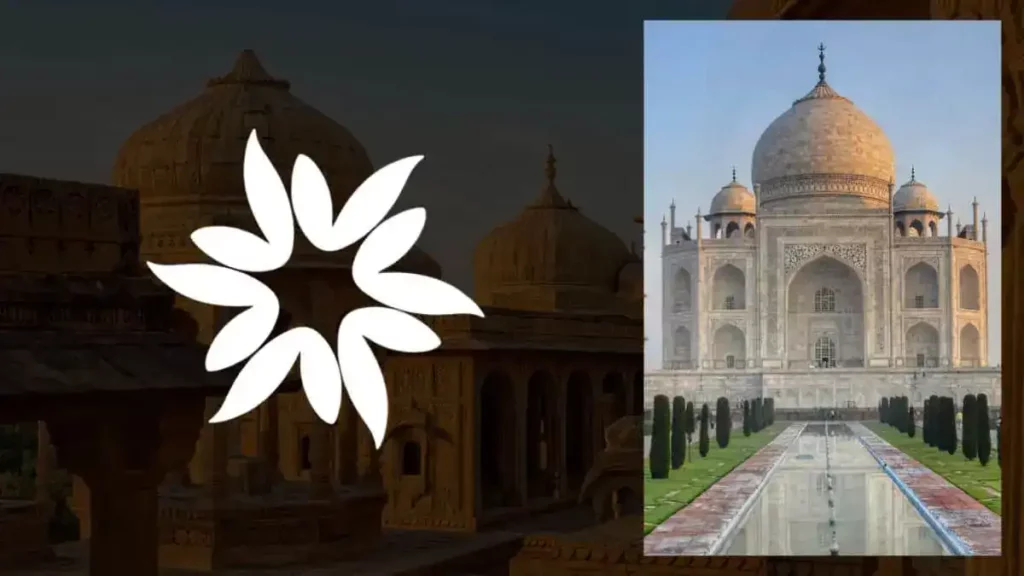Vietnam is one of Asia’s top destinations, known for its diverse landscapes, rich culture, and deep history.
Planning all the essentials of your trip, from choosing the best time to visit to figuring out transportation, can make your journey much better.
Key Takeaways
- It’s best to visit Northern Vietnam from April to May or September to October, Central Vietnam from January to June, and Southern Vietnam from January to April.
- Most travelers need a visa, with the e-visa being a convenient option. Vietnam is well-connected by flights, trains, buses, and taxis, making it easy to explore the country.
- Must-visit places include Hanoi, Ha Long Bay, Sapa, Hoi An, Hue, Da Nang, Ninh Binh, Ho Chi Minh City, the Mekong Delta, Phu Quoc, Con Dao Islands, and Mui Ne.
Best Seasons to Visit Vietnam
Picking the right time to visit Vietnam can really improve your trip. Each part of Vietnam has different things to see and do depending on the season, so it’s good to plan your visit based on the weather.
Northern Vietnam:
- Best months: April to May, September to October
- Avoid: December to March (cold and unsuitable for outdoor activities)
Northern Vietnam experiences four distinct seasons. The best times to visit are spring (April to May) and autumn (September to October) when the weather is mild and pleasant.
During these months, temperatures range from 20°C to 28°C, making it ideal for outdoor activities and exploring cities like Hanoi and Ha Long Bay.
Winter months (December to March) are colder, especially in the mountainous areas where temperatures can drop below 10°C.
This period is less suitable for outdoor activities but can still be enjoyable if you prefer cooler weather.
Central Vietnam:
- Best months: January to June
- Avoid: October to November (heavy rains)
Central Vietnam, including cities like Hoi An, Da Nang, and Hue, is best visited between January and June.
During these months, the weather is warm and dry, with temperatures ranging from 25°C to 30°C. This period is perfect for beach activities and sightseeing.
The region experiences heavy rainfall and potential flooding from October to November, which is best avoided.
Southern Vietnam:
- Best months: January to April
- Avoid: May to November (afternoon downpours)
Southern Vietnam, encompassing Ho Chi Minh City and the Mekong Delta, is best visited from January to April.
This period offers warm and dry weather, with temperatures between 25°C and 35°C.
The wet season from May to November brings frequent afternoon downpours, which can disrupt travel plans but also bring lush landscapes and fewer tourists.
Vietnam Visa Requirements and Transportation Options
Planning your transportation in Vietnam is essential for a smooth and enjoyable trip. Whether you’re arriving by plane, train, or bus and traveling between the country’s stunning regions, there are many options to choose from.
Visa Requirements
Most travelers need a visa to enter Vietnam. The e-visa is a popular option, allowing a stay of up to 30 days and costing around 25 USD.
This visa can be easily obtained through the official Vietnamese immigration website and usually takes 3-4 working days to process.
Countries like the US, Australia, Canada, and New Zealand require a valid visa before their trip. However, some European countries offer visa-free entry for up to 15 days.
Arrival Options
- Flights: Vietnam has numerous international and domestic airports. Major cities like Hanoi, Ho Chi Minh City, and Da Nang are well-connected with direct flights from various parts of the world. Domestic flights are frequent and affordable, making it easy to travel between regions.
- Land: Vietnam shares borders with Cambodia, Laos, and China, and you can enter via land crossings from these countries. Make sure to have your visa arrangements completed before arrival at the border.
- Sea: Entry via seaports is also possible via e-visa. Cruise ships often dock in ports like Ha Long, Da Nang, and Ho Chi Minh City, allowing tourists to explore various parts of Vietnam.
Transportation Options
- Domestic Flights: Vietnam’s domestic flights are an affordable and convenient way to travel long distances quickly. The country has around 21 domestic airports, and airlines like Vietnam Airlines, Vietjet Air, and Bamboo Airways offer extensive coverage.
- Buses: Buses are a popular and budget-friendly option, connecting every corner of the country. Sleeper buses are common for overnight journeys, and luxury options are available for added comfort.
- Trains: Train travel offers a scenic and relaxed way to explore Vietnam. While slower than buses, trains are generally safer and provide various seating and sleeping options. Popular routes like Hanoi to Sapa and Ho Chi Minh City to Da Nang are well-serviced.
- Taxis and Ride-Hailing Apps: Taxis are widely available and affordable. Ride-hailing apps like Grab make it easy to book rides and communicate destinations, even if you don’t speak Vietnamese.
- Private Transfers: Hiring a car with a driver is a convenient and flexible option for travelers. It allows for customized itineraries and stops along the way, offering a comfortable and hassle-free way to explore Vietnam.
12 Top Vietnam Travel Destinations in 2024
Vietnam is a country rich in history, culture, and natural beauty. Here are some of the top destinations you should consider visiting:
1. Hanoi
Hanoi, the capital of Vietnam, is known for its centuries-old architecture and rich culture influenced by Southeast Asian, Chinese, and French elements.
Key attractions include the Old Quarter, Hoan Kiem Lake, and the Temple of Literature. The city’s vibrant street markets and food scene, especially the famous Vietnamese pho, are not to be missed.
2. Ha Long Bay
A UNESCO World Heritage Site, Ha Long Bay is famous for its emerald waters and thousands of towering limestone islands topped with rainforests.
Visitors can enjoy boat tours, kayaking, exploring caves, and even overnight cruises to fully experience the bay’s tranquility and beauty.
3. Sapa
Located in the northern mountains, Sapa is known for its picturesque terraced rice fields and ethnic hill tribes. It’s an excellent destination for trekking, with routes offering stunning views of mountains and valleys.
The town itself has a charming mix of French colonial architecture and traditional Hmong culture.
4. Hoi An
Hoi An is a well-preserved ancient town with a history dating back to the 15th century. It’s famous for its beautiful lantern-lit streets, traditional wooden houses, and vibrant markets.
The monthly Lantern Festival, where the town is illuminated with lanterns and candles, is a unique cultural experience.
5. Hue
Hue — the former imperial capital of Vietnam — is home to the historic Imperial City, a vast complex of palaces, temples, walls, and gates.
The city is also famous for its royal tombs, pagodas, and the Perfume River, which provides a scenic backdrop for boat trips.
6. Da Nang
Da Nang is known for its sandy beaches, including My Khe Beach, and its modern amenities.
Key attractions include the Marble Mountains, the Dragon Bridge, and the Ba Na Hills, where you can find the famous Golden Bridge held by giant stone hands. It’s an excellent place for both relaxation and adventure.
7. Ninh Binh
Often called the “Halong Bay on land,” Ninh Binh features stunning karst landscapes and tranquil rivers.
The Trang An Landscape Complex, a UNESCO World Heritage Site, offers boat tours through scenic valleys and caves. The region is also home to Bai Dinh Pagoda, the largest complex of Buddhist temples in Vietnam.
8. Ho Chi Minh City
Formerly known as Saigon, Ho Chi Minh City is Vietnam’s largest city and a bustling economic hub.
It combines modern skyscrapers with historic French colonial buildings. Key attractions include the War Remnants Museum, the Reunification Palace, and the Cu Chi Tunnels, a network of tunnels used during the Vietnam War.
9. Mekong Delta
The Mekong Delta is a vast network of rivers and swamps in southern Vietnam. It’s known for its floating markets, where vendors sell produce directly from their boats.
Visitors can also explore local villages, rice paddies, and bird sanctuaries. It’s a unique area in Vietnam where you can experience the traditional way of life.
10. Phu Quoc
Phu Quoc is Vietnam’s largest island, known for its stunning beaches, clear waters, and lush tropical forests.
The island offers a range of activities, from snorkeling and diving to exploring traditional fishing villages and visiting local markets. It’s an ideal destination for a relaxing beach holiday.
11. Con Dao Islands
The Con Dao Islands are an archipelago of 16 islands known for their beautiful beaches and clear waters.
Con Son, the largest island, offers a mix of natural beauty and historical significance, including the infamous prison used during the French colonial period. It’s a less touristy destination, perfect for those looking for tranquility and adventure.
12. Mui Ne
Mui Ne is a coastal town famous for its red and white sand dunes. Visitors can enjoy activities like sandboarding and kite surfing.
The town is also known for its fishing village and colorful boats, making it a picturesque spot for photography.
Cultural Etiquette in Vietnam
Understanding and following local customs in Vietnam will improve your trip and help you connect with the people. Here are some important cultural etiquette tips to remember:
Greetings and Respect
- Greetings: A common greeting is “Xin Chao” (sin jow). Use “Xin Chao” to show respect, especially when addressing someone older or meeting for the first time. Pronouns vary by age and gender, so it’s important to use them correctly. For example, use “chị” for a slightly older female and “anh” for a slightly older male.
- Respect for Elders: Always show deference to older individuals. Allow them to speak first and address them with appropriate titles.
Dining Etiquette
- Starting a Meal: Wait for the eldest person at the table to begin eating before you do. This shows respect for their seniority.
- Using Chopsticks: Do not stick chopsticks vertically into your food, as this resembles incense sticks used in funerary rites. Avoid pointing with chopsticks, and don’t play with them at the table.
- Finishing Your Plate: Leaving food on your plate is considered disrespectful. Try to finish everything you’re served to show appreciation for the meal.
- Tooth Picking: If you need to pick your teeth, cover your mouth with your hand to avoid being impolite.
Dress Code
- General Attire: Modesty is key. Avoid overly revealing clothes, especially in rural areas and when visiting temples. For temple visits, wear clothes that cover your shoulders and knees.
- Climate Considerations: Vietnam’s climate varies from north to south. Pack lightweight, breathable clothing for the warm weather and layers for cooler northern regions.
Social Etiquette
- Public Behavior: Avoid public displays of affection. Hugging, kissing, and even holding hands can be considered inappropriate, especially in rural areas.
- Body Language: Do not touch people’s heads or beckon with your finger, as these actions are considered disrespectful. Standing with your arms crossed or hands on hips can also be perceived as aggressive.
- Gift Giving: When visiting someone’s home, bring a small gift such as flowers or fruit. Avoid yellow flowers or anything black, as these are associated with funerals. Always give and receive gifts with both hands.
Business Etiquette
- Building Relationships: Business in Vietnam often starts with building personal relationships. Be prepared to discuss personal topics and show interest in the other person’s family and background.
- Meeting Conduct: Be punctual and dress conservatively. When exchanging business cards, use both hands and maintain eye contact. It’s customary to wait until the other party starts eating or drinking before you do.
Safety Tips in Vietnam
Vietnam is generally a safe destination, but it’s wise to know potential risks and how to mitigate them.
Common Scams and How to Avoid Them:
- Taxi Scams: Use reputable taxi companies or ride-hailing apps like Grab. Always ensure the meter is running or agree on a fare beforehand.
- Currency Scams: Be cautious when exchanging money. Use official exchange counters and familiarize yourself with the currency to avoid being shortchanged.
- Fake Goods: Be wary of buying brand-name goods at local markets, as counterfeit items are common. Always check the quality before purchasing.
Health and Safety
- Food and Water: Street food is delicious, but ensure it’s cooked thoroughly. Drink bottled water and avoid ice in drinks as a precaution against waterborne illnesses.
- Traffic: Traffic can be chaotic, especially in big cities. Use pedestrian crossings and be vigilant when crossing streets. Consider using apps to book rides rather than renting motorbikes unless you are experienced.
- Emergency Numbers: Familiarize yourself with local emergency numbers. Police can be reached at 113, the fire department at 114, and the ambulance at 115.
Respecting Local Laws and Customs
- Drug Laws: Vietnam has strict drug laws with severe penalties, including the death penalty for trafficking. Avoid any involvement with drugs.
- Photography: Always ask for permission before taking photos of people, especially in rural areas or of ethnic minorities. Respect “No Photography” signs at specific sites.
Suggested Itineraries in Vietnam
Planning your trip to Vietnam can be a fun challenge because of its varied landscapes and rich cultural experiences. Here are some travel plans for different trip lengths to help you enjoy your visit.
10-Day Itinerary: Northern and Central Vietnam
Days 1-2: Hanoi
- Explore the Old Quarter, visit the Hoan Kiem Lake, the Temple of Literature, and the Ho Chi Minh Mausoleum. Enjoy street food tours and try local delicacies like pho and bun cha.
Days 3-4: Ha Long Bay
- Take a cruise through Ha Long Bay, a UNESCO World Heritage Site known for its emerald waters and limestone islands. Spend the night on a junk boat and explore caves and islands.
Days 5: Dong Hoi
- Visit the Phong Nha-Ke Bang National Park, another UNESCO site famous for its stunning caves and underground rivers.
Days 6-7: Hue
- Discover the Imperial City, the tombs of ancient emperors, and the Thien Mu Pagoda. Don’t miss the local specialty, Bun Bo Hue.
Days 8-9: Hoi An
- Stroll through the ancient town, visit the Japanese Covered Bridge, and take a cooking class. At night, enjoy the vibrant lantern-lit streets and the local night market.
Day 10: Departure
- Fly out from Da Nang, which is close to Hoi An.
2-Week Itinerary: Comprehensive Vietnam Travel Guide
Days 1-2: Hanoi
- Follow the same itinerary as the 10-day plan.
Days 3-4: Sapa
- Take a bus or train to Sapa. Trek through terraced rice fields and visit ethnic minority villages.
Days 5-6: Ha Long Bay
- Similar to the 10-day itinerary.
Days 7-8: Hue
- Explore Hue’s historical sites.
Days 9-10: Hoi An
- Similar to the 10-day itinerary.
Days 11-12: Ho Chi Minh City
- Visit the War Remnants Museum and the Reunification Palace, and explore Ben Thanh Market. Experience the vibrant nightlife in District 1.
Days 13-14: Mekong Delta
- Take a boat tour through the Mekong Delta, visit floating markets, and explore rural villages. Return to Ho Chi Minh City for your departure.
Excited to Explore Vietnam?
Vietnam is a country rich in history, culture, and natural beauty. Whether you have 10 days, two weeks, or three weeks, there’s a perfect itinerary to suit your travel style.
From the bustling streets of Hanoi and Ho Chi Minh City to the tranquil landscapes of Ha Long Bay and Sapa, each destination boasts something unique.
Start planning your unforgettable journey to Vietnam today, and make sure to utilize our suggested itineraries to experience the best of Vietnam. Embrace the local culture, savor the delicious food, and enjoy the breathtaking scenery — your adventure awaits!




